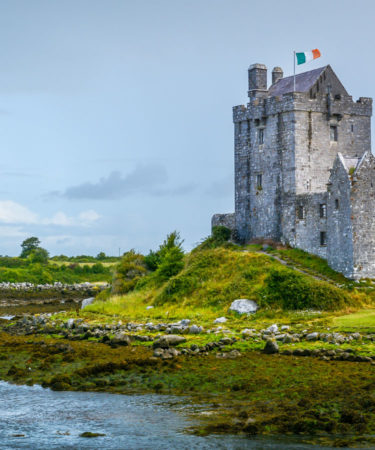For many, Ireland is synonymous with green meadows and Guinness. As it turns out, associating Éire with beer isn’t entirely unfounded. In 2017, an Irish historian and lecturer presented a shocking discovery at a food research seminar in London. In 16th-century Ireland, laborers drank more than two gallons of beer per day.
Dr. Susan Flavin, who is now associate professor of history at Trinity College in Dublin, presented documents dated January 1565 indicating stonemasons at a Dublin quarry were permitted a daily allotment of “14 pints of ale.”
This led to a pressing question: “Were people drunk all the time? We’ll possibly never know,” Flavin told the Irish Times in 2017.
The details, as we imagine those ales may have been, are hazy. For one, Flavin said, “We don’t know how strong the beer was.” She estimated 7 percent ABV — close to a modern double IPA.
It was also high in oat content, which may sound trendy today — oats, once reserved for stouts and porters, are now a key component of the ubiquitous hazy IPA — but for lower-class laborers, they were a necessity.
At that time, Irish crops were burning, barley was difficult to harvest, and wheat was expensive. Oat-rich ale “was seen as good for energy and health, and was thought to have restorative properties,” Flavin said.
It was also highly caloric, between 400 and 500 calories per pint. By comparison, today’s most popular beers rarely exceed 150 calories. And, even with the recent rash of low-cal, low-carb lagers and ales aiming to fit into active lifestyles, few nutritionists would recommend beer as a staple of a healthy diet.
Nevertheless, Flavin’s discovery was well-received. In 2018, her research was awarded €1.5 million in funding from The European Research Council. She’s now leading a project called FoodCult, which “seeks to understand food and drink culture in Ireland more broadly,” Flavin tells VinePair.
The best part? Flavin is working with a team of experimental archeologists, a museum, and a German brewing scientist to recreate the ancient beer. The global team is “using period methods and ingredients” to recreate the beer, including growing heritage grain and hops with suppliers in the U.K. and Ireland, and using a historic mill built by 17th-century Quakers from Ireland. “We even have a cooper coming out of retirement to build us a mash tun,” Flavin says.
The beer will be brewed at the Weald and Downland Living Museum in Chichester, England in November 2019.
